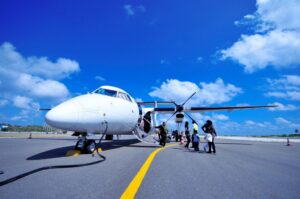Personal air travel services are rapidly becoming the preferred alternative to commercial flying for those seeking speed, privacy, and convenience. From business executives to leisure travelers, more flyers are turning to customized aviation experiences that offer enhanced control over their journeys. These services include everything from selecting the aircraft type to choosing personalized catering and flight schedules.
Private jet charter is a leading choice among the options available in this sector due to its adaptability and customer-centric approach. Services are tailored to each client’s needs, whether the focus is on efficiency, luxury, or discretion. With options ranging from light jets for regional trips to long-range aircraft for international travel, users have access to a wide range of flight experiences.
How the Process Works
Arranging personal air travel begins with defining the traveler’s requirements. These may include the destination, travel date, passenger count, preferred amenities, and luggage capacity. Service providers then match those preferences with available aircraft, offering detailed range, speed, cost, and comfort comparisons. The traveler selects an option, and the provider coordinates every aspect of the flight, including ground transportation and in-flight services.
Once the details are confirmed, a contract is issued, followed by payment and final scheduling. Most providers require identification documents and passenger manifests for regulatory compliance. Flights are usually operated out of private terminals known as Fixed Base Operators (FBOs), which streamline boarding and eliminate common commercial travel delays. From takeoff to landing, the experience is controlled, discreet, and uninterrupted by public airport protocols.
Aircraft Categories and Their Uses
Personal air travel includes access to various aircraft tailored for different missions. Light jets are commonly used for regional or short-haul trips and are favored for their efficiency and accessibility. They typically seat 4 to 7 passengers and are ideal for quick business hops or weekend getaways. Midsize jets offer a balance of range and space, accommodating up to 9 passengers with additional luggage and stand-up cabins for added comfort.
For longer journeys or larger groups, super-midsize and heavy jets are available. These aircraft can fly intercontinental routes without refueling and have enhanced onboard features such as lie-flat seating, satellite Wi-Fi, and full-service galleys. Turboprop aircraft are another option, particularly useful for accessing smaller airports with shorter runways. Though slower than jets, they provide cost-effective and reliable service for short distances.
Key Advantages of Personalized Flight Services
One of the strongest advantages of personal air travel is the ability to design a flight experience around individual needs. Travelers can choose departure times that suit their schedules, fly to smaller regional airports closer to their final destination, and avoid the delays and inconveniences of commercial terminals. This level of flexibility is particularly valuable for time-sensitive business trips or multi-stop itineraries.
Privacy is another major benefit. The entire private jet charter is reserved for the booking party, ensuring confidential conversations and uninterrupted rest or work during the flight. Travelers enjoy customized in-flight experiences, with the ability to select catering, entertainment, and cabin configurations that align with personal preferences.
Efficiency is also a central advantage. Personal air travel significantly reduces waiting time at airports, boarding, and dealing with baggage claims. Travelers can arrive at the terminal just minutes before departure and be airborne shortly thereafter. This streamlined process saves hours per trip and offers unparalleled convenience.
Pricing and Value Considerations
The cost of personal air travel depends on several key factors. These include the type of aircraft, flight duration, landing fees, fuel usage, and optional services like catering or ground transport. Aircraft size and range significantly influence overall expenses. Short regional flights typically involve different requirements than long-distance or international trips. Each route may also bring unique operational considerations, such as airspace access or weather conditions.
Additional services can further customize the travel experience but may contribute to the overall cost. These can include personalized catering menus, onboard staff, concierge assistance, and door-to-door ground transportation. Some travelers may also request particular cabin configurations or pet accommodations, requiring advance planning and coordination.
Safety and Operational Standards
Safety remains a cornerstone of personal aviation. Private operators must adhere to strict regulations set by the Federal Aviation Administration (FAA) or equivalent bodies in other countries. Pilots hold advanced certifications and undergo recurrent training throughout the year. Aircraft maintenance is scheduled rigorously, and operations are audited regularly by third-party safety organizations.
Additionally, many private flight providers offer real-time tracking and operational support. Flights are monitored for weather disruptions, route changes, and other contingencies. Clients receive status updates and can make adjustments on the fly, further enhancing the control and reliability of the service. These procedures combine to deliver a highly secure and professionally managed travel experience.
Making the Most of the Experience
To get the best value from a private jet charter, planning ahead is important. Early booking allows for better aircraft selection and more competitive pricing. Establishing a relationship with a trusted service provider can also unlock access to preferred rates and premium aircraft.
Exploring membership programs or block-hour agreements may lead to further savings for frequent travelers. Evaluating travel patterns and understanding personal preferences can help in choosing the right service model. Clear communication with the provider ensures that every flight meets expectations, from ground logistics to in-flight services.








